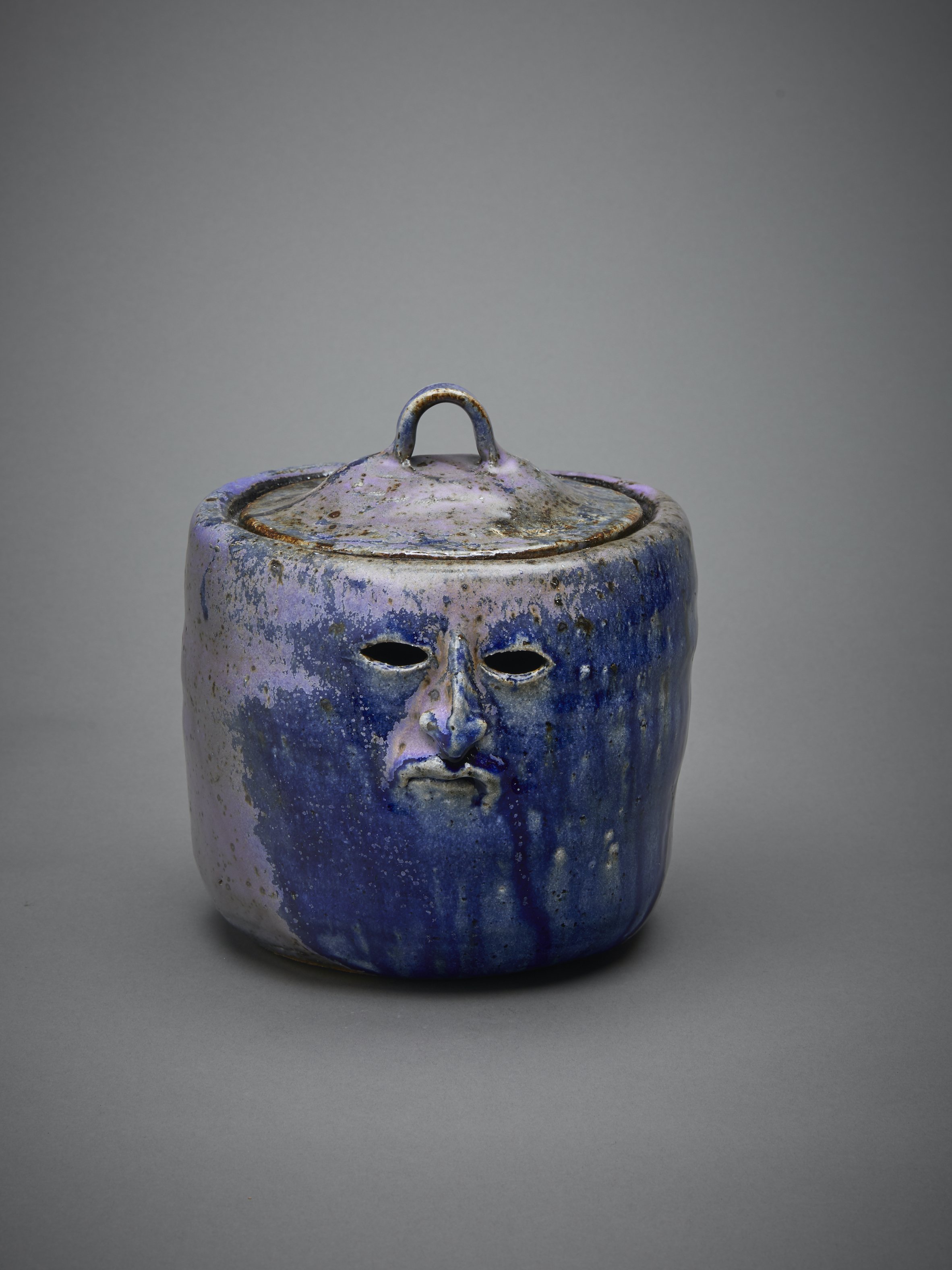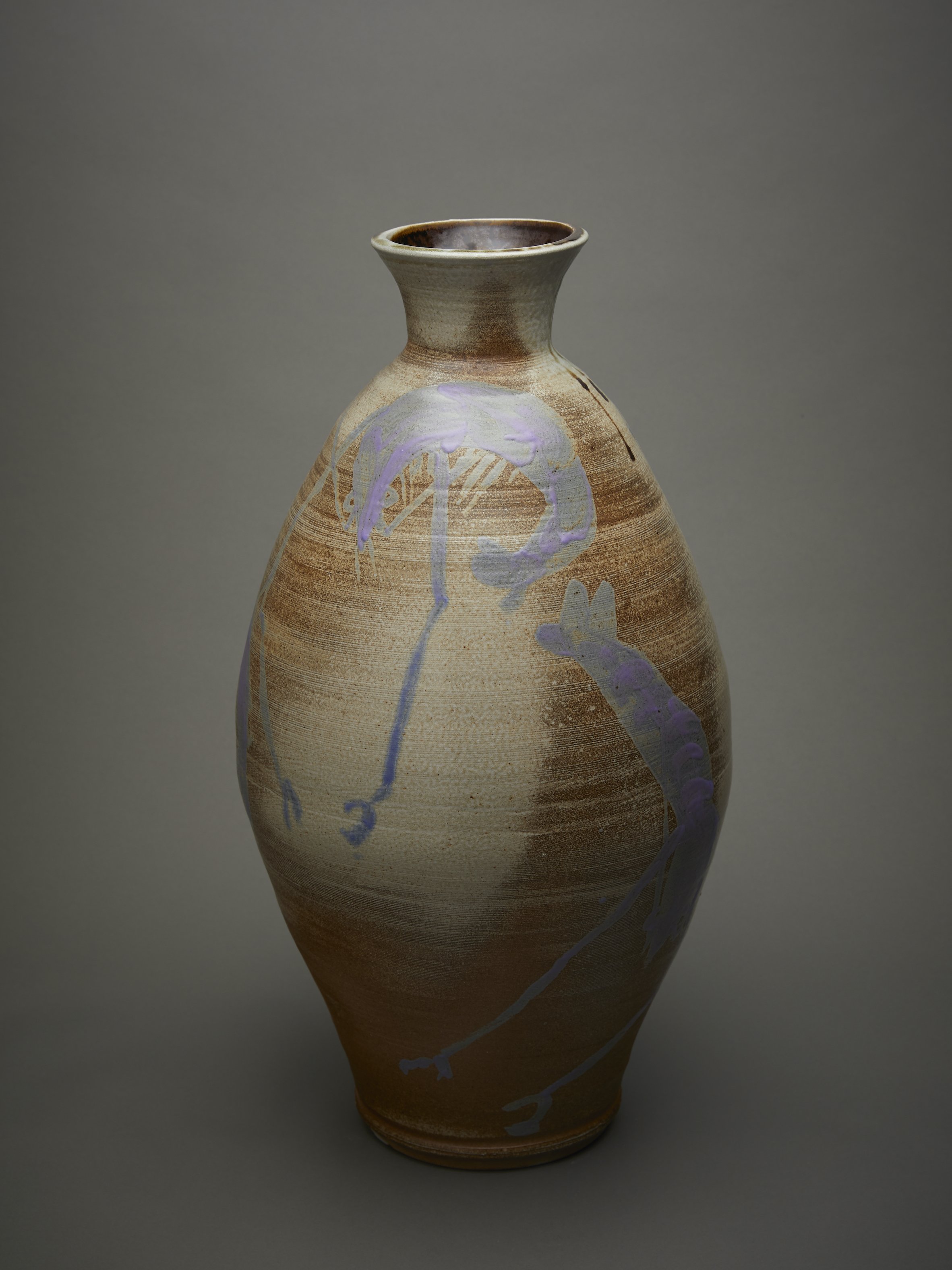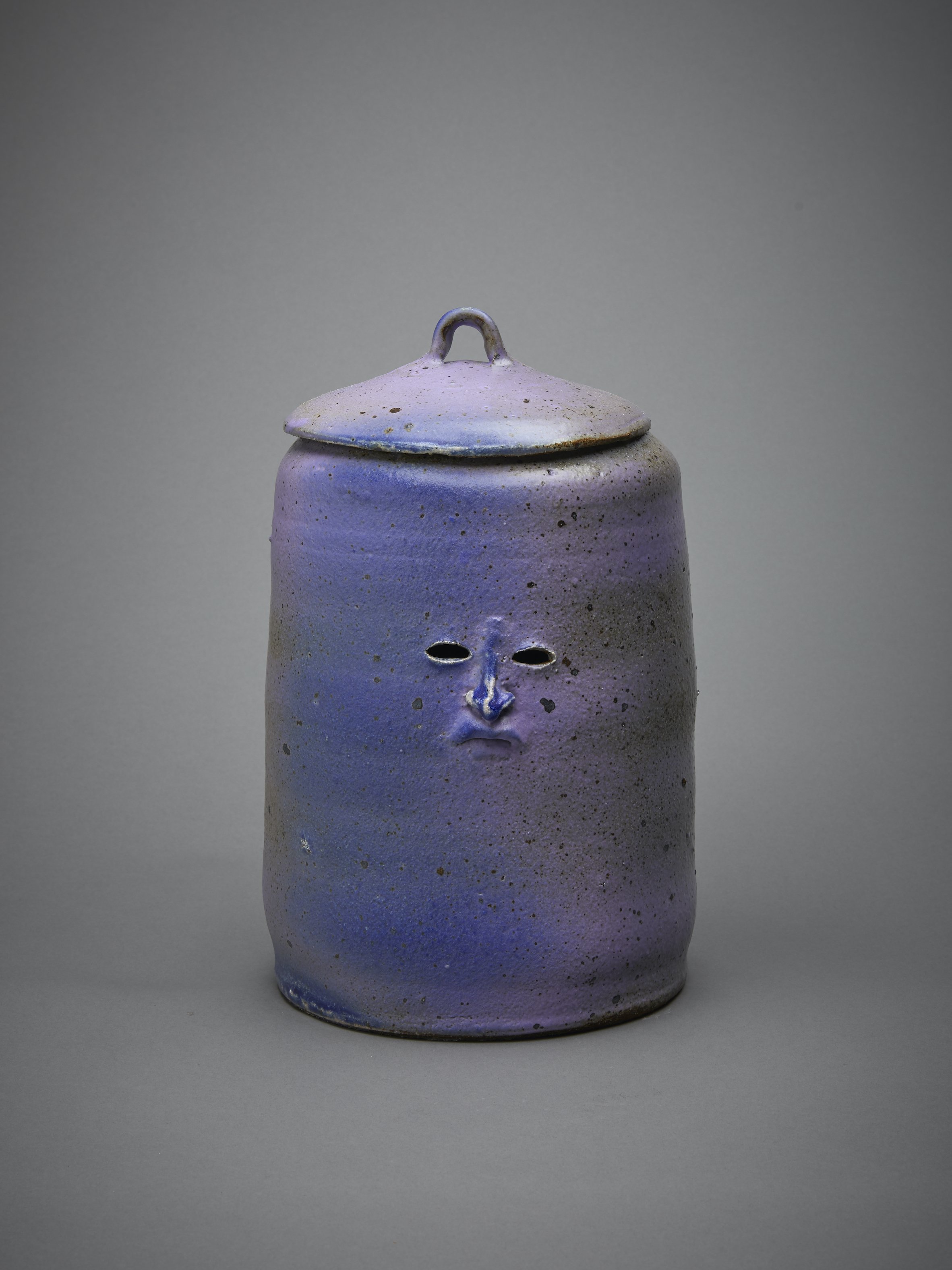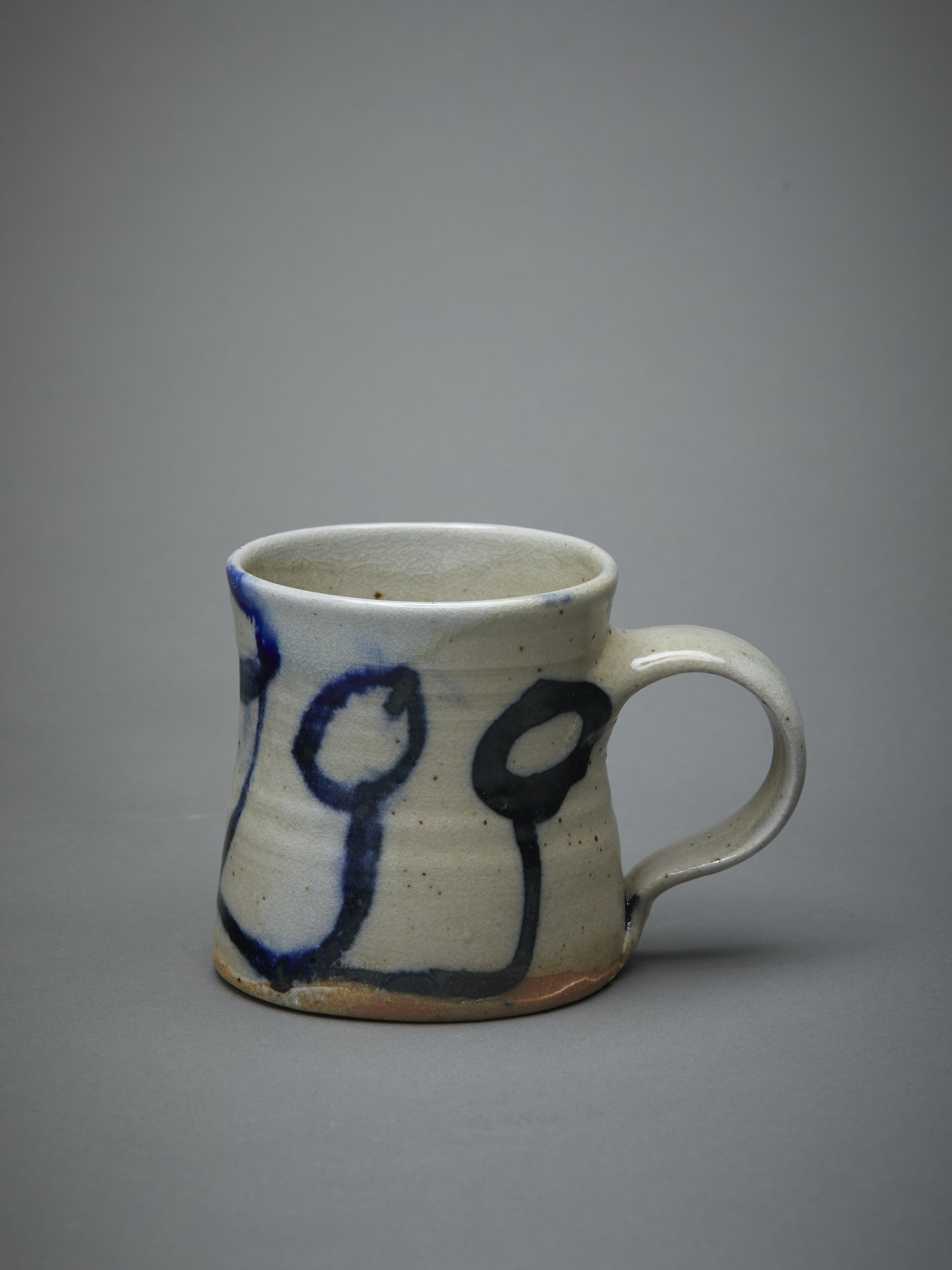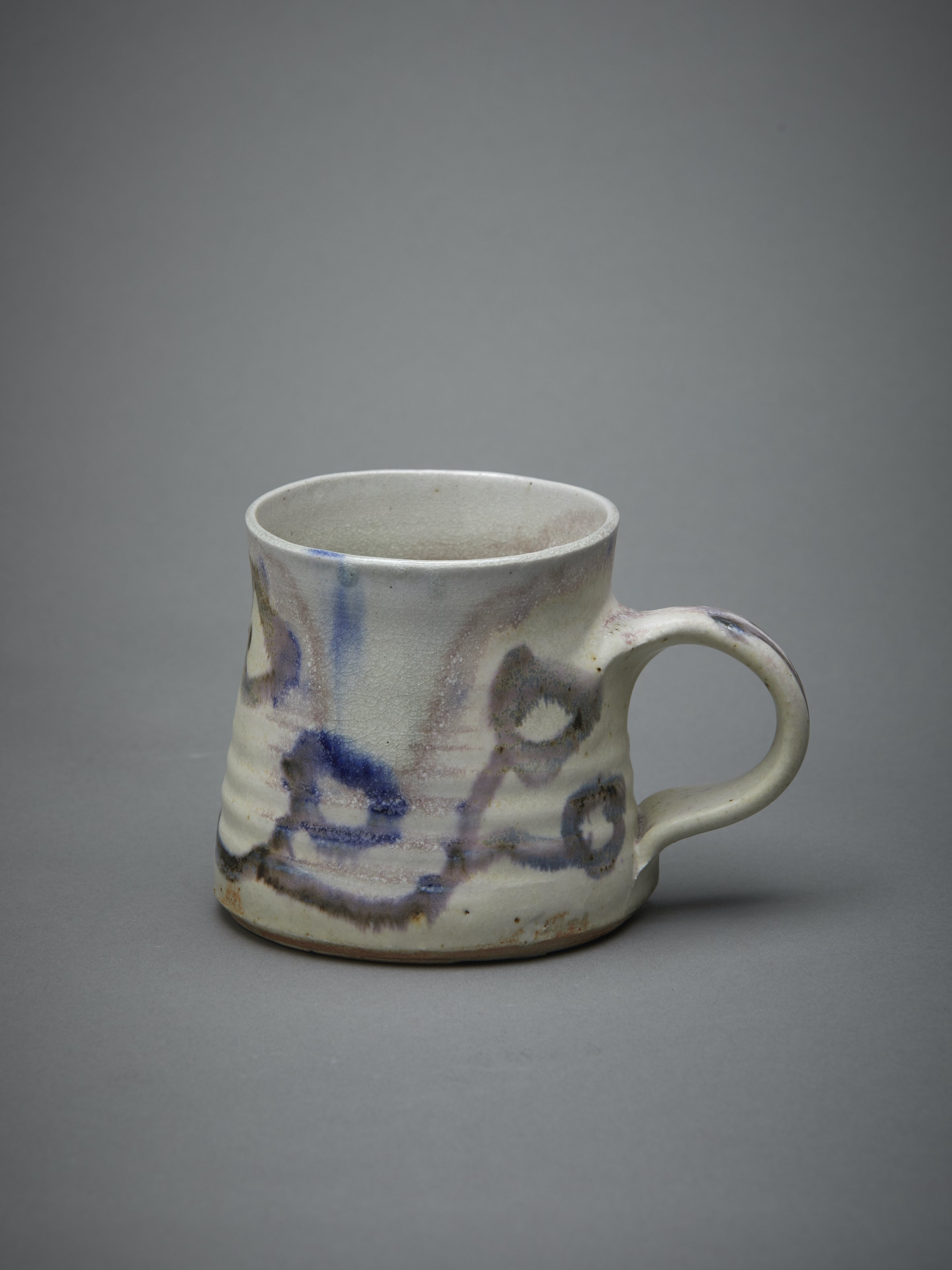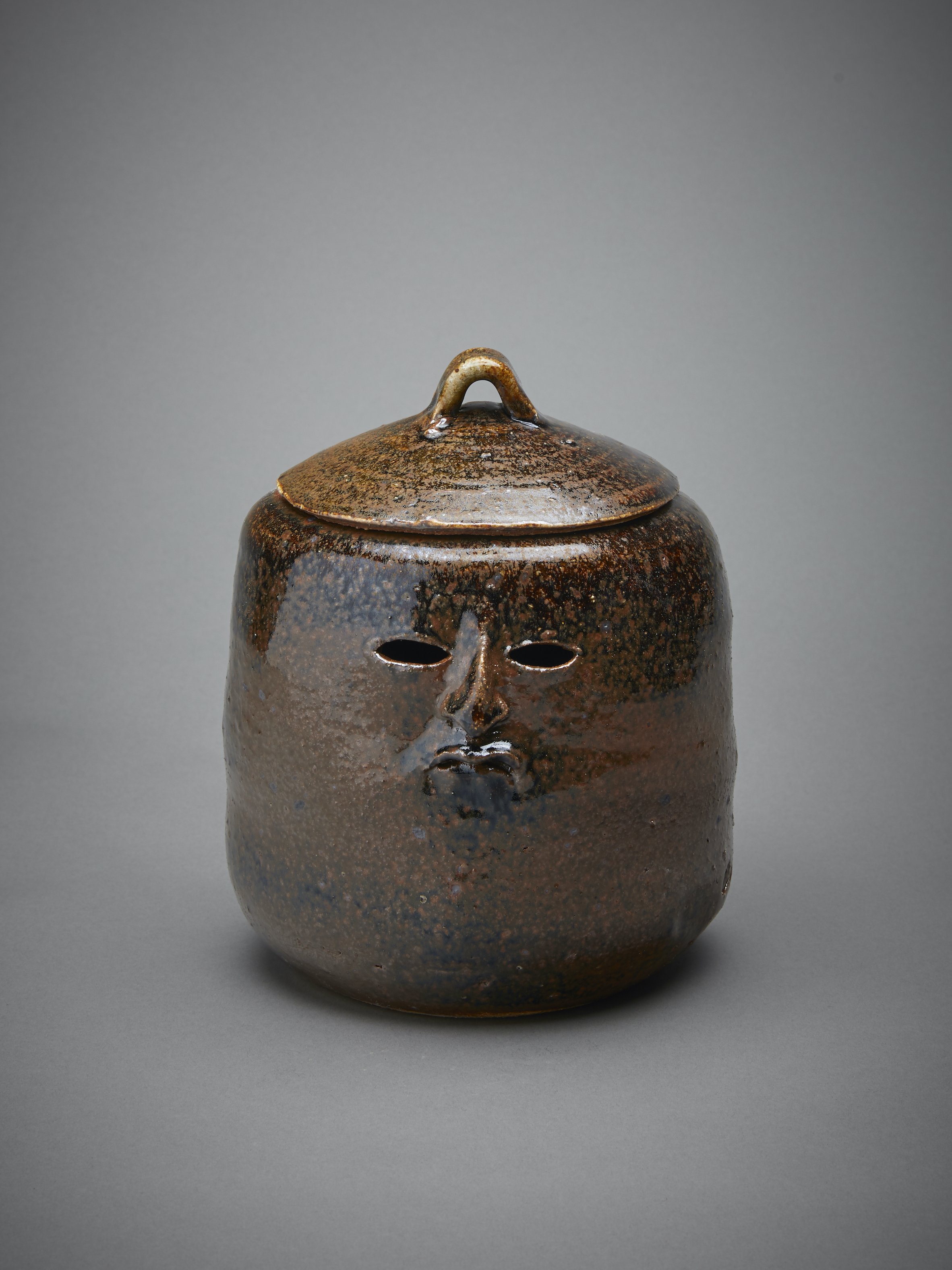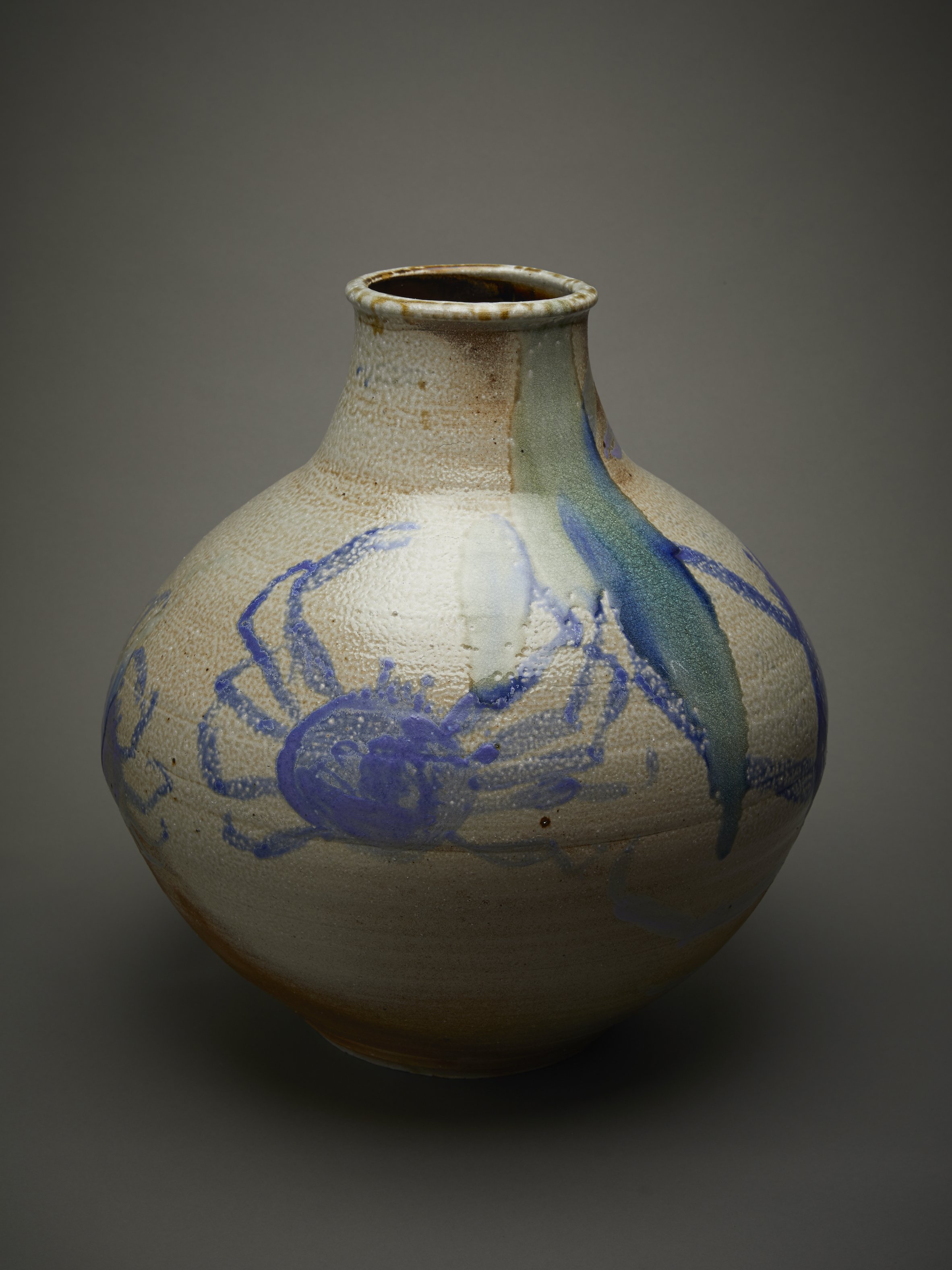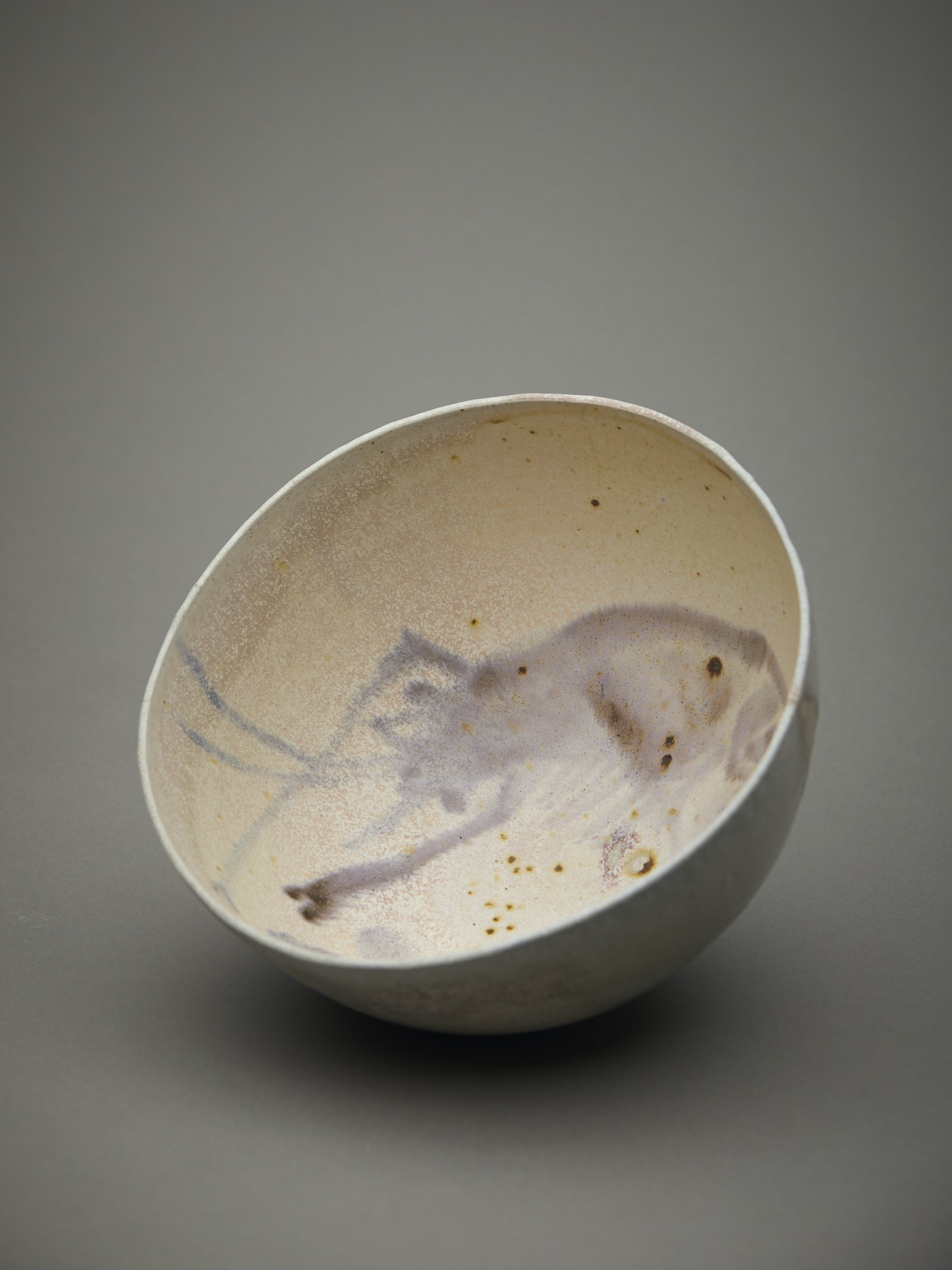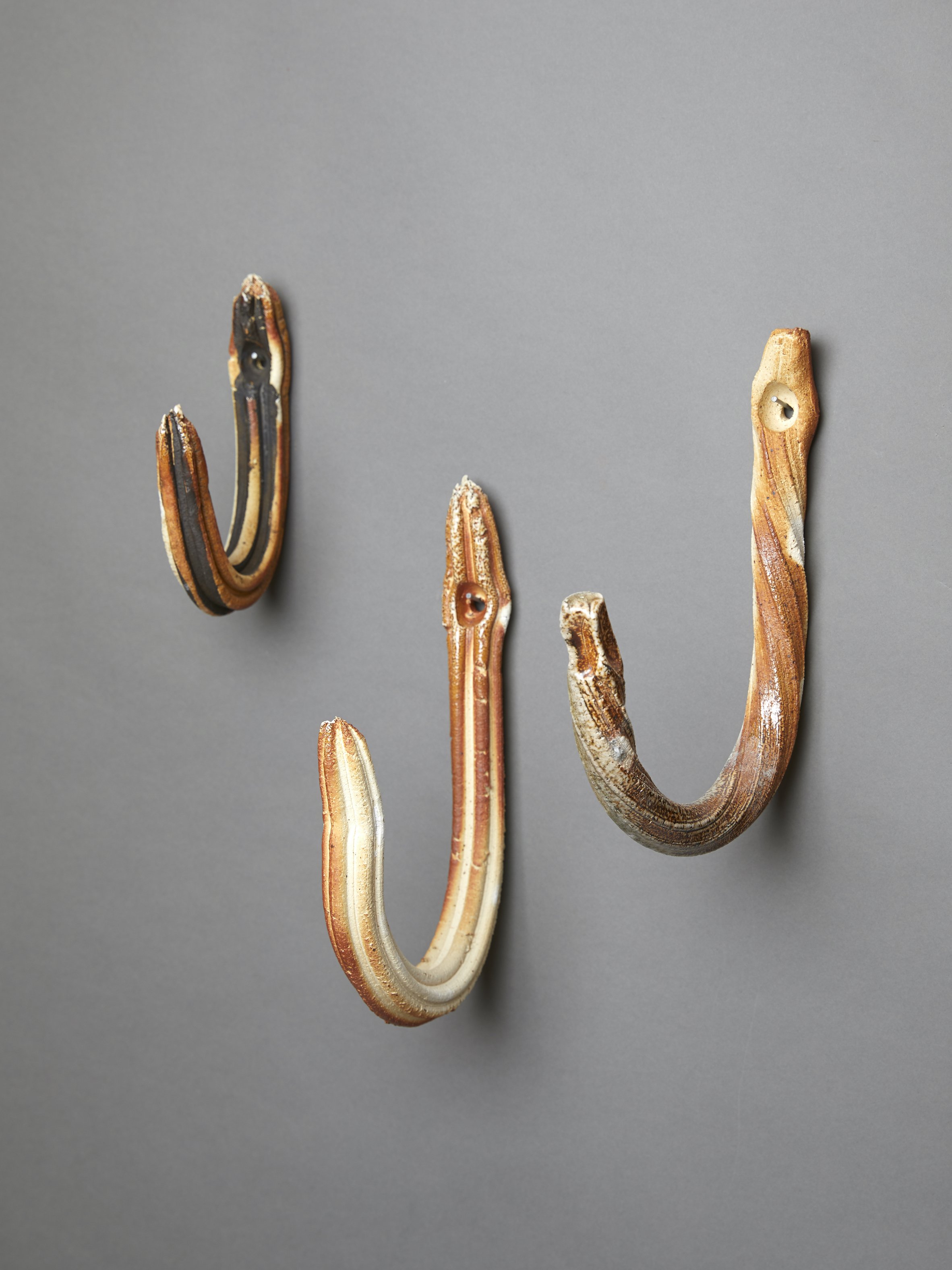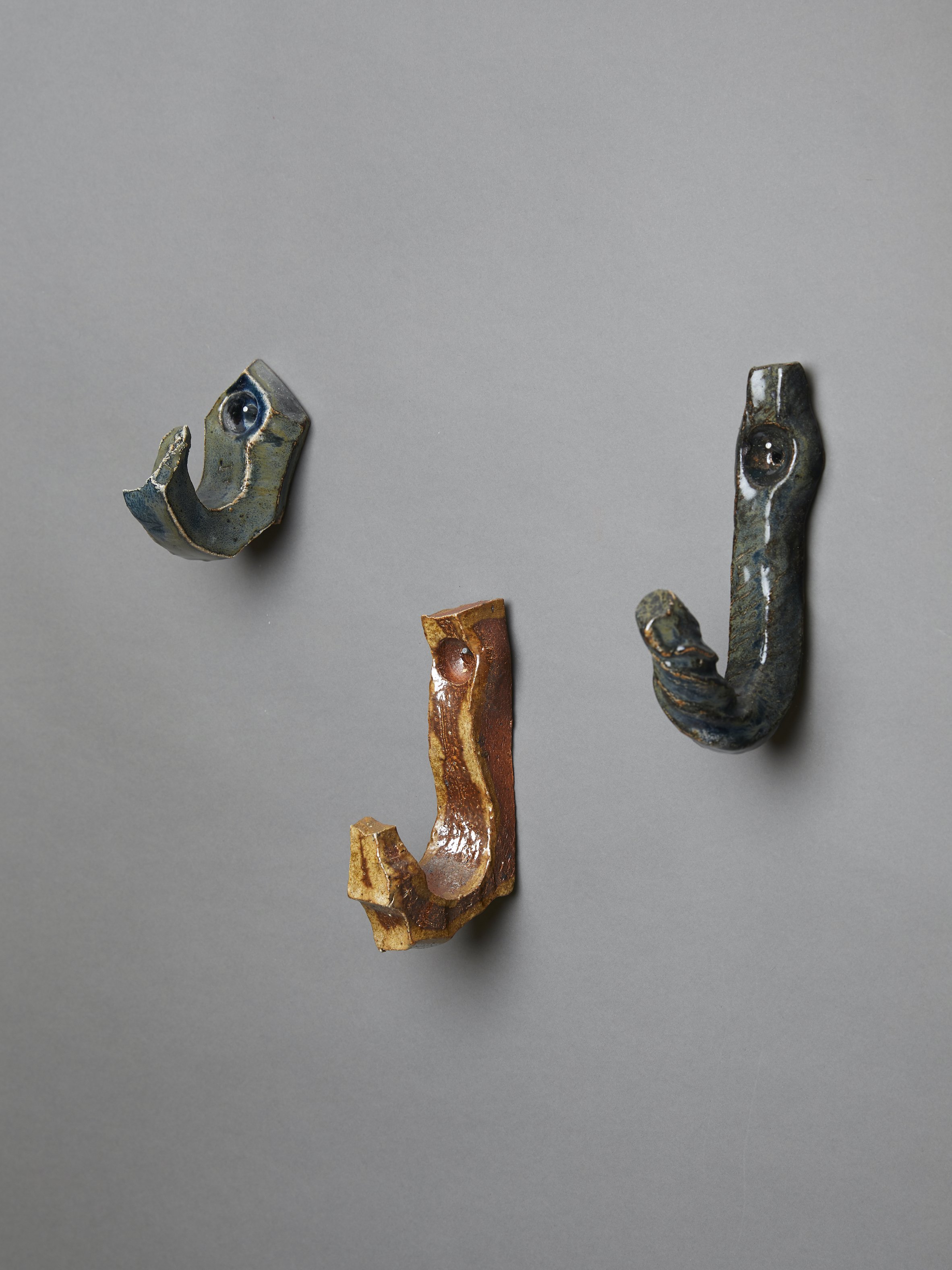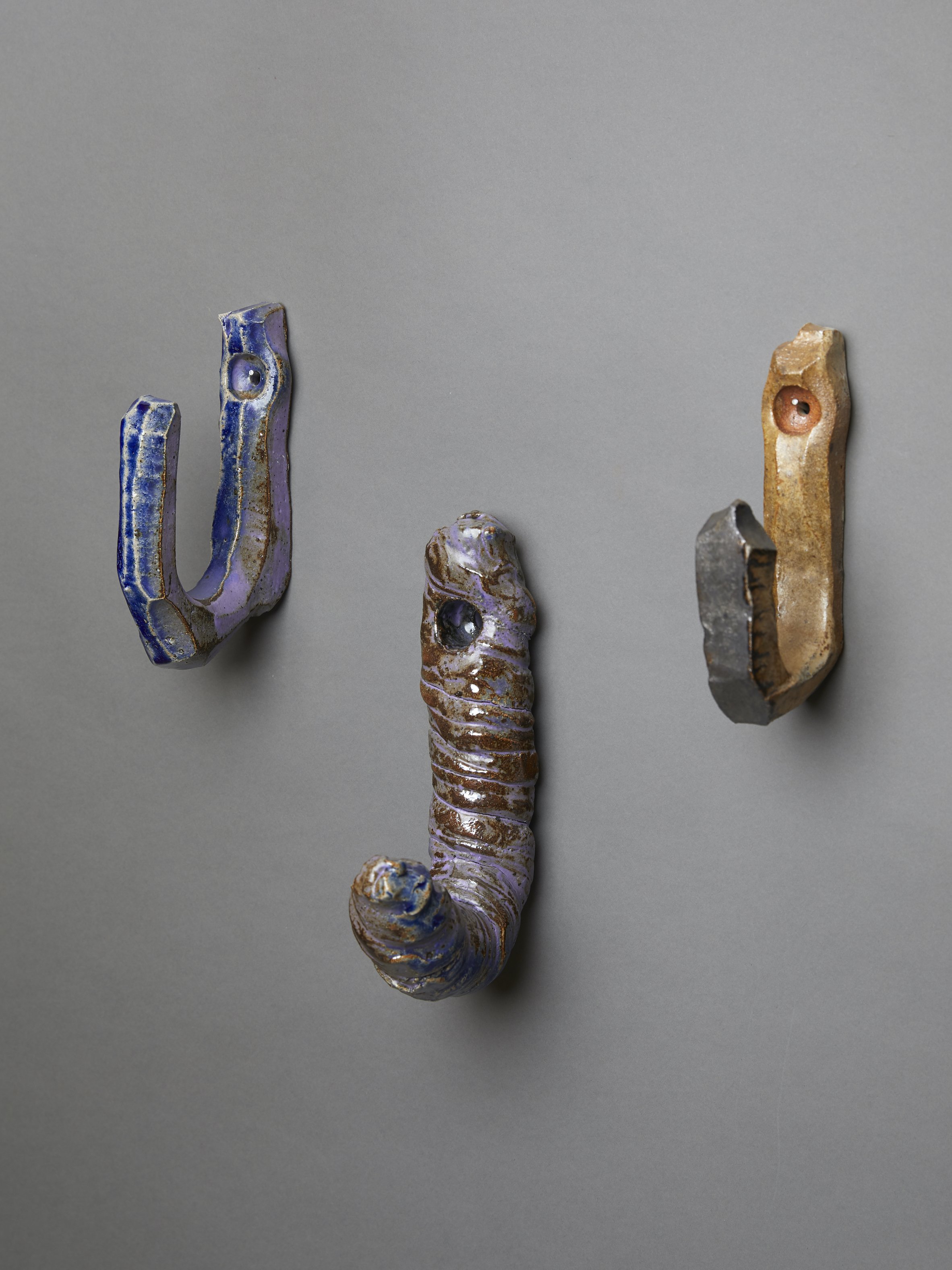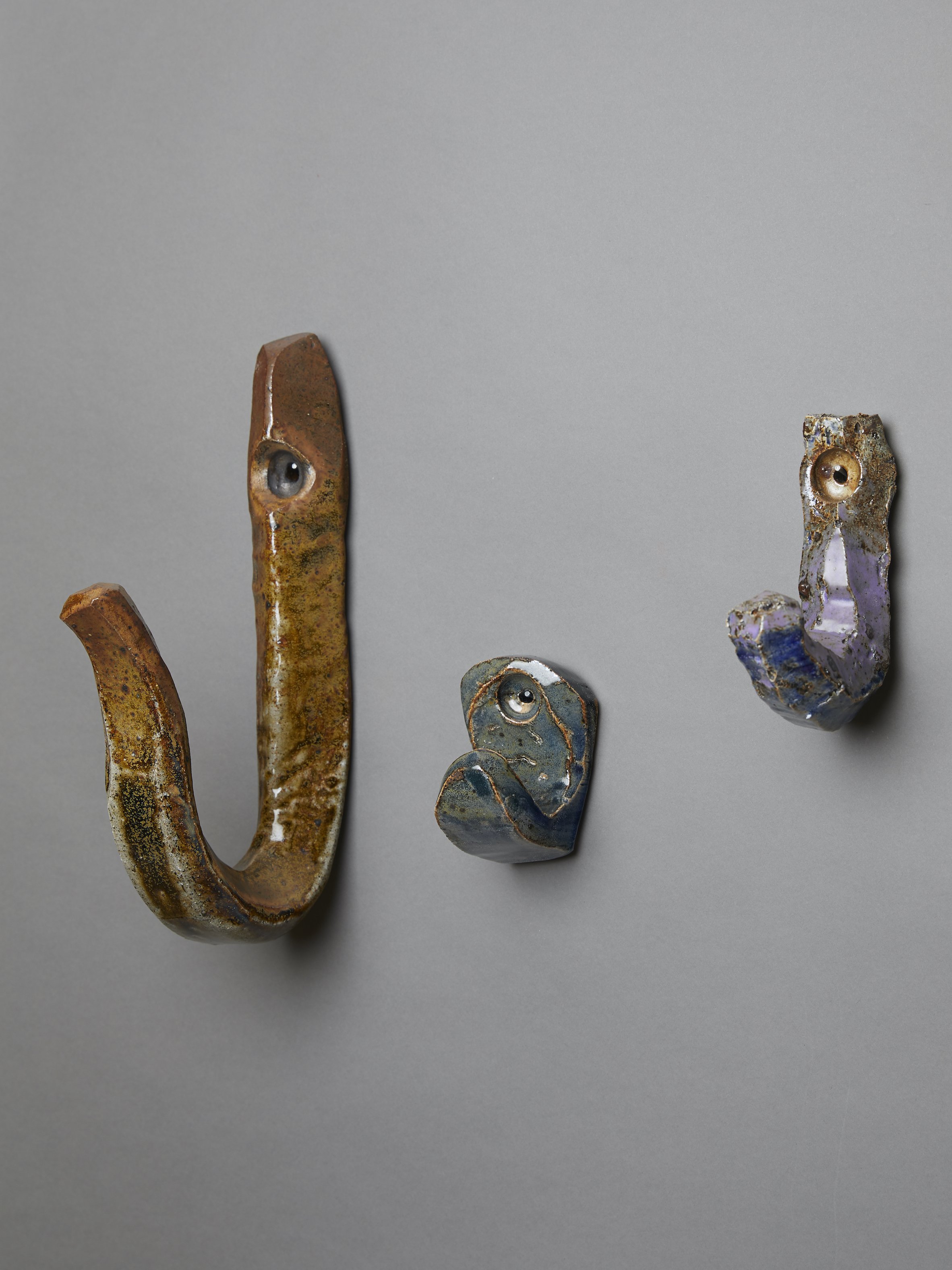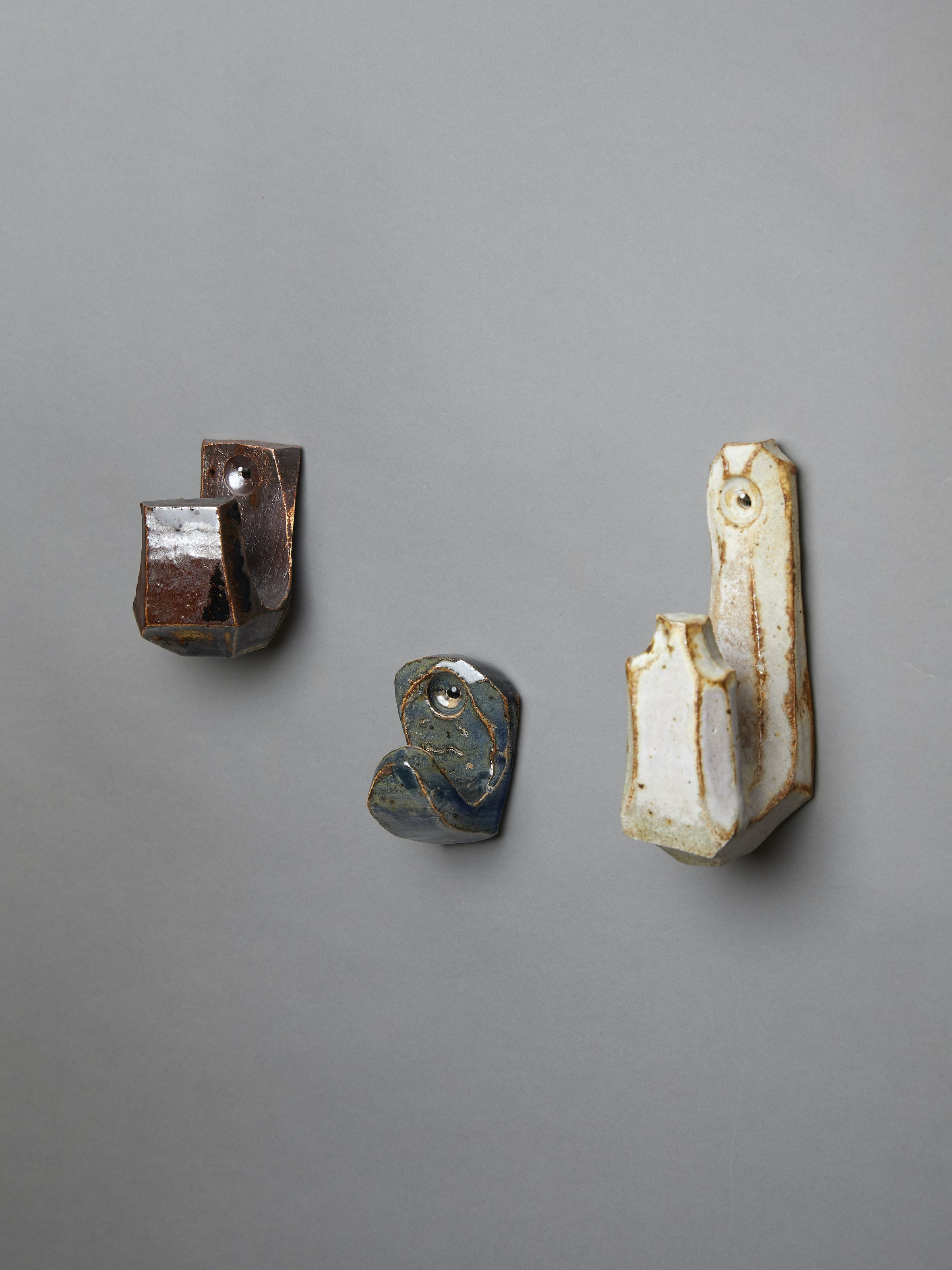Gesamtkunsthandwerk in Coromandel
A selection of ceramic works by Francis Upritchard and Martino Gamper in the Driving Creek Potteries in Coromandel. (Image: Sam Hartnett).
Firing pots in a wood-fuelled kiln is a tricky business.There’s an art to building the kiln – designing a hollow structure that can withstand the extreme temperatures of the firing process (usually around 1,300°C at its hottest point) with a chamber that allows heat and air to circulate as evenly as possible. The pots need to be loaded carefully – packed in tightly between the shelves, with those most likely to withstand unpredictable, harsher temperature changes at the edges and those in need of easier, more consistent treatment in the middle. Once the fire has been lit, it has to be kept stoked for around 24 hours; wood must be added regularly to keep the temperature rise consistent until it reaches the point at which the glazes melt and meld.
I saw part of this process in March 2019, when visiting the Driving Creek Railway and Potteries on New Zealand’s Coromandel peninsula. I was there to meet designer Martino Gamper and artist Francis Upritchard, who were working with potters Laurie Steer and Jamie Jenkins for a few weeks of the New Zealand summer. They had two firings at the end of their stay, and I arrived at the tail end of the first. On reaching the potteries, I found that the bricks at the front of the kiln had been moved away – like a giant present being unwrapped – and a motley crew of mugs, bowls, sculptures, hooks, clay nails and pots were being pulled out and loaded onto waiting railway trolleys.
Gamper and Upritchard working at the Driving Creek Railway and Potteries.
As the pieces were unpacked, there was a gleeful excitement in seeing what the kiln had worked into them – the alchemical effects of heat, smoke, glazes and soda on clay. Wood-fired kilns are notoriously unpredictable in terms of the results they produce on the material. “You almost don’t bother expecting anymore,” says Upritchard. Steer, who is a full-time potter and part-time surfer, compares the process to surfing a wave: “You have to get the feel of it, but it can’t be controlled.” It’s an exercise in experimentation and throwing caution to the wind, playing with fire in the hope that, as the potter Barry Brickell put it in 1972, “a little peril improves a good pot”.
Driving Creek Railway and Potteries was founded by Brickell in the early 1960s on a large, steep hillside outside the small farming town of Coromandel. Having initially moved to the area for an ill-fated job as a teacher, Brickell changed direction within a few months and bought a tract of farmland, including a splintering, tumbledown villa, on which he planned to set up his potteries. From this initial site, he moved to a much larger, neighbouring 60 acres in 1974. “I chose Coromandel as a place to live for several reasons,” he wrote in Art New Zealand in 1977. “First, it has a bit of wilderness to it – a wild backdrop. There’s a back-of-beyond to it. There are mountains, bush and a rugged environment in which there are still plenty of resources. Second, it was a short trip to Auckland direct by sea[…]. And third, the geology is such that there are plenty of potters’ materials.”
Views over the landscape of Coromandel.
Ambitious and diverse in his output, Brickell built a rich practice as a potter at the same time as he set about radically transforming the landscape of Driving Creek. Arriving on a site that had been almost completely cleared of trees (first by the 19th-century timber trade and then by farmers), he spent the next four decades cultivating seeds and replanting the land with dense native bush. A keen engineer and steam enthusiast, Brickell also slowly built a railway line that traversed the property and was initially designed to bring clay down from the steep surrounding hills. “We’re finding out that potters do have their problems here, but on the whole we have good clay and glazing bodies,” wrote Brickell. “It suits me to be out in the country. I can make smoke, play trains, and aforestate my way.”
“All my role models were saying, ‘Get a mortgage’; this dude was saying, ‘Get nude, light a fire.’”
Brickell was a key figure in a burgeoning New Zealand pottery scene, and from its early days Driving Creek attracted rafts of visitors and artists (mostly young men) who came to learn about his craft, but also to provide manual labour for the trains, trees and kilns. The world that they made at Driving Creek is strange and beautiful – everywhere you look there are fragments, pots, mugs, bowls and sculptures growing out of clay banks. A jumble of houses and studios perches around the railway terminus, while walkways over the tracks lead to kilns and workshops. At the centre of it all is the railway, a huge and complicated engineering feat of zigzagging tracks that heads up the steep incline above the potteries, finishing at Brickell’s “Eyefull” tower – a rotunda on stilts, full of wasps and views out to the sea.
The work that Upritchard and Gamper are producing in Coromandel is for two shows in Auckland galleries. Gamper’s exhibition, called Hookaloti, consists of dozens of hooks smattered around the walls of the room like raisins in a cake, with a table made from golden off-cuts of kauri wood sitting in the middle of it all. Upritchard’s show, Centaurs and Sea Creatures brings together an ethereal mix of watercolours, cast copper and silver works, glazed pots and bowls, mythical ceramic creatures, and a loose-limbed sculpture of a woman named Jessie. The exhibitions are not strictly linked, although they are thrown from the same materials and made in the same place with the same people. The two bodies of work wash up alongside one another on Auckland’s Karangahape Road.
Upritchard and Gamper grew up in New Zealand and Italy respectively, and now share a studio in London. Gamper trained as a furniture designer and has a practice that encompasses furniture, and product and interior design, alongside more experimental projects such as 100 Chairs in 100 Days (2007), for which he used found objects and materials to build a chair a day for 100 days. Upritchard’s output is similarly diverse; involving a gigantic number of materials and mediums, her work ranges from figurative sculptures made from wild rubber, or metal and textiles, to sculptural installations, ceramics and paintings. On this trip, Upritchard and Gamper have been playing with an idea that has inflected much of their recent work. Dubbed “gesamtkunsthandwerk” by Gamper and the jeweller Karl Fritsch, this is an exploration of collaborative ways of working – one that is grounded in process and a shared interest in making. In choosing this title, Gamper and Fritsch slipped an extra “hand” into the more familiar 19th-century term “gesamtkunstwerk”, or “total work of art”. “‘Handwerk’ means craft in German[…] so for a German-speaking person it’s probably humorous,” says Gamper, “but the reason we chose that phrase is because it’s made by hand and I think that’s what connects the three of us – we make things by hand, regardless of the category that it’s labelled as: art, design or craft.”
The centre was founded by the potter and steam enthusiast Barry Brickell in the 1960s.
“As an artist, I always thought that the way that they make their work is exactly the same process as how I make mine,” adds Upritchard. “But it’s really separated [into art, craft and design] and we’re questioning why.” This connection with other designers and craftspeople is established quite practically, on one level, by working together on elements of a piece or an installation. “When I met Karl Fritsch,” Upritchard explains, “in maybe 2005 or 2004, I really loved his work and wanted to work with him. We pretty much immediately worked together when he made rings for some of my sloth creatures. [sculptures of sloth-like creatures with hugely elongated limbs].” In 2011, in a show at New Zealand’s Govett-Brewster Art Gallery titled Gesamtkunsthandwerk, Gamper, Upritchard and Fritsch worked with weaver Lynne Mackay, potter Nicholas Brandon, bronze caster Jonathan Cambell, felter Pam Robinson, glass blower Jochen Holz and woodturners Jan Komarkowski and Peter Wales on an installation of furniture, sculpture, textiles and ceramics.
“I’ve become interested in alternative lifestyles. In Europe all that stuff is strongly tainted”
Driving Creek was a particularly appropriate place for the latest iteration of this project, given that Brickell’s life was vividly structured around the importance and equality of making. One of the most remarkable aspects of the potter’s work was his even-handed interest in all of its diverse parts. Fascinated by engineering and steam engines, and deeply committed to conservation, Brickell saw the train, the bush and the pots as having equal significance – all pieces in the larger project of building something worthwhile. As with gesamtkunsthandwerk, the point for Brickell was making – of any kind and regardless of hierarchy or distinction. “I don’t want to be elevated,” he noted in his 2012 book Doggerel. “I want to be a workman. Whether pots, the railway, it’s all the same thing.”
While in New Zealand, Upritchard and Gamper collaborated with friends around the country – exchanging ideas and techniques, trying out new processes and playing around with materials. Before travelling to Coromandel, they spent a week making work for the shows in Fritsch and the jeweller Lisa Walker’s Wellington studio. Here, Upritchard used lost-wax casting to make a series of small silver and copper pieces – mainly reliefs of faces – while Gamper sand cast copper and aluminium to make beautifully pitted and textured hooks. They describe this week as an exhilarating flurry of metal. “We were cutting up parts of his [Fritsch’s] old house; he had all these old copper pipes which we were cutting up to make my works,” says Upritchard. “We were also smelting metal, which was so exciting. Martino got so excited one night he said, ‘Do you think I’m OK?’ Karl said, ‘You’ve got casting fever. I’ve got it too. I didn’t sleep last night.’”
In Coromandel, Upritchard and Gamper are working in the studio with Steer and Jenkins, and have been joined by other local potters such as Sam Ireland for the firings. Steer is in many ways the host – having learned to fire from Brickell in the late 2000s, he spent the next 10 years visiting Driving Creek to make pots and help with the kilns. “I’d come through a whole system of people saying that there was no opportunity to be an artist in the world,” says Steer, “and Barry was the first person I met who demonstrated an alternative storyline. This was a guy who was totally free and did whatever he wanted, whenever he wanted, and it was working really well for him. All my role models were saying, ‘Get a job, get a mortgage’; this dude was saying, ‘Get nude, light a fire.’”
Brickell died in 2016, and Gamper and Upritchard’s visit was the first time that the kilns had been fired since then. Steer plans to invite more artists, potters, writers and engineers to the potteries over the next few years, hoping to make them “a place where creative people can come and have the freedom required to push forward their thinking”. His ideas about the future of Driving Creek are moulded around the kind of existence that Brickell believed in – self-determined, unconventional, and driven by active work. “I wanted to invite people that I knew were rock solid, and I knew that they’d fit in because they’re the hardest workers I know,” he says of Upritchard and Gamper. “I’d been up and met Barry before, with Francis, towards the end of his life. And she had a real respect for him and what he’d done. She had a respect for him as a creative monster, I suppose, as a guy that just did his own thing and didn’t give a fuck.”
“New Zealand is one of those places that people came to to ‘step outside’ and start over.”
Another potter who is present at Driving Creek – although through his pots rather than his person – is Nicholas Brandon, a family friend of Upritchard’s. He is also a well-known New Zealand potter from the same generation as Brickell. Brandon loves to throw but doesn’t like to fire (“[Firing] is really fun,” explains Upritchard, “but it’s kind of exhausting”), and so gave Upritchard free reign on a stock of his unfired mugs, bowls and vases. She drove them to Coromandel and painted them with sea creatures and luminous glazes before firing for the exhibition. In all of these projects, friendships and collaborations, the sharing of ideas, skills and space seems as important, in many ways, as the end result. “Nick is quite funny because he doesn’t care if the result is bad,” says Upritchard. “He may even say that he doesn’t like the result, but it won’t, in any way, annoy him or cross his mind that that’s a bad thing. It’s just like, ‘Nah, that’s not for me.’”
Gamper seems similarly enlivened by working in such a process-focused way. “The rest of the year I’m in a studio, I’m working with commissions, I’m working for manufacturers – it’s a lot more paper-based and project-based,” he says. “The work I’ve done here was really free. And that’s very liberating: it’s very inspiring to have less pressure, to be able to try things out, be playful and meet other people who are interested in all kinds of processes. People in London probably think, ‘What do you do down there, why are you doing this strange pottery stuff?’ But it usually materialises in something else later on: that experimental stage comes back in the work.”
There is a beautiful circularity to these ideas when seen in the context of Driving Creek. Brickell’s concept of art was strongly focused around process. “[Art is] not confined to any thing: it’s not thing-bound,” he wrote in Art New Zealand. “Whatever is done by human beings and that motivates human beings has potential for art. It’s essentially an inter-people phenomenon... a language... a form of communication.” Although Driving Creek was emphatically not a commune (the writer David Craig notes in the 2013 book His Own Steam: The Work of Barry Brickell that “hippies and hangers on who came to the rustic pottery expecting a counter-cultural[…] community[…] found something closer to a bush workcamp”), the potteries emerged during a larger moment of off-grid existence. Brickell’s extreme do-it-yourself-ness could be seen as a version of the ways of living encapsulated in late 1960s publications such as the Whole Earth Catalog (a kind of how-to guide for the back-to-the-earth movement, first published in the US in 1968), but it also fits into a particular local story of self-sufficiency.
The idea of living off the land, and of being in nature, has always held a romance for pakeha (white) New Zealanders, who have often idealised the idea of a hardy local type, described by Jane Stafford and Mark Williams in their book Maoriland as being “at home in the wilderness rather than the drawing room”. This idea went so far as to be institutionalised in the early 1970s, with a Labour government taking the remarkable step of introducing a scheme of state-sponsored communes, called “ohu”, that aimed to let “New Zealanders and their friends recapture the satisfaction based on cooperation, mutual assistance and communalism, which had been the force which motivated both the first Maori and the first European settlers of this land,” in the words of Matiu Rata, the then-minister of lands.
A feeling for this period in the 1960s and 1970s, and for Brickell’s specific, alternative way of living, is etched into the physical environment at Driving Creek. It can be seen in the groups of kilns, in the collections of pots and textiles made by Brickell’s friends, and in the ad-hoc timber buildings that make up the house and studios – all seemingly stitched together from found materials and odd bits of wood, with more rooms added on as and when they were needed. “I think I’ve become particularly interested in alternative lifestyles by coming to New Zealand,” says Gamper. “In Europe all that stuff is strongly tainted. To say to someone in New Zealand that they live like a hippy is a very different thing than in Europe, where it’s kind of an insult. There’s a beautiful German word, “aussteigen”, which you use when you get off of a bus, or off a train, and it means to step outside. I think New Zealand is one of those places that people came to to really ‘step outside’ and start over.”
Communal spaces at Driving Creek.
Gesamtkunsthandwerk, and the collaborations that this group of friends worked on over the New Zealand summer, is a version of this stepping outside. It is a warm embrace for a more experimental practice; one that pushes things past their fashionable end point. Arguing that “the design world has become a bit like the fashion world”, Gamper and Upritchard say that they are instead interested in thinking about “how we live, how we work, in a different way”. Perhaps because, as Upritchard puts it, “we’re both practical and our ideas come a bit through making”, this is something expressed most vividly through their materials and process. Gamper’s hooks, in particular, are filled with the joyous, busy, messy traces of weeks spent playing around with different techniques. The ceramic hooks range from long, skinny ones that seem to have been pushed through an icing bag and have the golden-brown roast and ridged surfaces of churros, to chunky, faceted ones carved from fat slabs of clay. There are blown-glass hooks with hollow rounded ends; hooks made from fortuitously curved bits of wood; cast-metal hooks and hooks made from found bits of pipe. “They are about fun and play,” says Gamper. “Not everything has to be perfect”.
“Gesamtkunstwerk” – in its original form, without the added “hand” – is a word that was first used the 19th-century, most famously in relation to music. Describing a complete and harmonious unity, it evokes many elements written in relationship to each other, as part of a larger work. Both Upritchard and Gamper, in their different projects, have played around with an idea of the whole, while also revelling in the complications and toothy snags of detail. There is always a strong feeling of storytelling in their work, intertwined with the sense of a group of things, gathered and categorised according to different (and sometimes oblique) typologies. With Upritchard’s collection of centaurs and sea creatures, it’s impossible not to feel that this family of objects are tied together by some kind of narrative thread – they appear as fragments from, or records of, a particular place or time. The story that these works seem to tell is never quite graspable, but as individual objects, carefully grouped, they are deeply evocative of a larger world and a bigger web. The roomful of hooks, while on the face of it more quotidian, generates a similarly magical feeling of both the individual detail and the big picture. It is a jewel box of shapes, textures, colours and materials; and also a chronicling of types – an encyclopaedia of things.
The whole that Gamper and Upritchard are creating in this work is much more than its physical, object-based parts. It’s a composite of friends, places, techniques – ways of making and ways of living. Akin to the wood-fired kiln, it’s a suggestion for messier, riskier and less predictable work – shaped by multiple hands and extending across many different kinds of place, object and practice,
Words Elizabeth Bisley
Photographs Sam Hartnett
This article was originally published in Disegno #23. To buy the issue, or subscribe to the journal, please visit the online shop.




